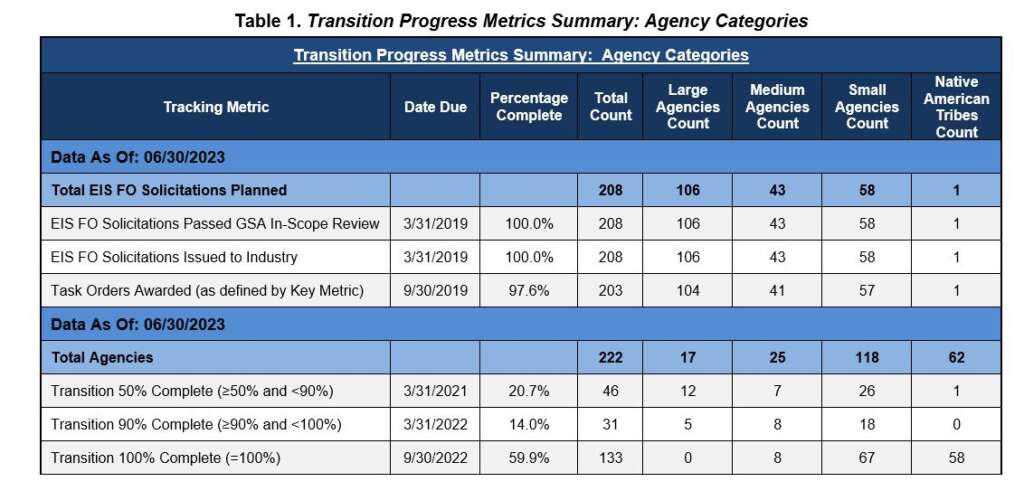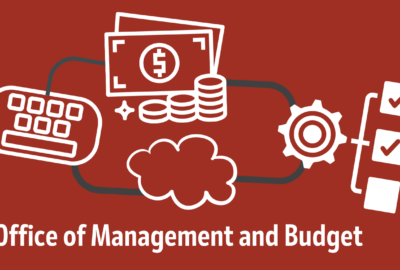For 21st Century IDEA Act, EIS, it’s just a matter of time
After almost five years, the Office of Management and Budget is close to issuing new guidance for how agencies should implement the 21st Century IDEA Act, while the...
Time is a funny concept when it comes to federal technology initiatives.
There’s never enough time to fix everything. The initiative needs more time to bake. The law, policy or regulation will take time to implement and show results. When it comes to cybersecurity, time isn’t on our side.
I can only imagine that for every agency chief information officer, singer, songwriter Joe Jackson may have summed it up best in his song Got the Time: “Time – got the time tick-tick-tickin’ in my head.”
The recent updates from the General Services Administration on the Enterprise Infrastructure Solutions (EIS) program and the Office of Management and Budget around the 21st Century IDEA Act underscore the trials and tribulations of time in the federal IT community.
GSA is giving eight agencies a new deadline to move to EIS.
OMB is expected to issue new IDEA Act guidance in early September and is encouraging agencies to apply for funding from the Technology Modernization Fund soonest to meet some of the new goals.
As the Rolling Stones famously said, time — years for some agencies with EIS and weeks for the IDEA Act — is on your side, that is, until it’s not.
Let’s start with the immediate countdown clock.
Federal Chief Information Officer Clare Martorana has said several times earlier this spring and summer that OMB finally, after four-plus years, will issue guidance to implement the IDEA Act. Sources say that guidance could come as soon as early September.
Martorana said on Aug. 2 at the IT Vendor Management Summit that while some agencies have moved out on initiatives that the IDEA Act is focused on, others have been “waiting for more deliberate guidance in order to start turning those gears of government forward so the American people can get the IT services that they deserve.”

“It basically will be a 10-year roadmap for digital transformation. Much of this is, as I like to say, motherhood and apple pie. It’s all those good things that we all know have to happen. But it’s really deliberate, thoughtful and achievable for our government to execute on the 21st century IDEA Act,” she said. “It’s very foundational things like not duplicating content, publishing content that’s easy to find and easy to understand, modernizing front-end design and improving the experience of websites and digital services, ensuring we have consistent look or feel branding across agency channels and that everyone is using the US Web Design System. We’re going to improve the design, development and accessibility, which is really critical for all of our digital products and services to ensure sufficient capacity to support Section 508 of the Rehabilitation Act of 1973.”
President Donald Trump signed the IDEA Act in December 2018, which aims to make federal “.gov” websites more mobile-friendly and more secure.
OMB’s delays in getting the guidance out the door can be attributed to several reasons, fair or not. First, OMB had little support within the Trump administration to expedite the improvements, partly because it was a Democrat priority, and partly because it came toward the end of the administration and people and focus went elsewhere, especially as the pandemic went into full swing. The Trump administration did release updated web design standards in January 2020 as part of its IDEA Act efforts.
IDEA Act delays for a host of reasons
When the Biden administration took over OMB, the pandemic remained the focus and then there was a series of cyber incidents that took a lot of time away from the IDEA Act. Biden’s executive order on customer experience, signed in December 2021, does build on the IDEA Act themes, specifically by repeatedly tasking agencies with digitizing forms, as well as improving their websites and expanding the services they offer online.
On top of all of this, Congress interest was tepid at best. Rep. Gerry Connolly (D-Va.) had talked about adding the IDEA Act to the Federal IT Acquisition Reform Act (FITARA) scorecard.
But the December 2022 version didn’t add it, and there hasn’t been a 16th FITARA scorecard yet this year with the Republicans taking control over the Oversight and Reform Committee.
In the meantime, lawmakers led by Connolly and Reps. Carolyn Maloney and Khanna, wrote one letter in May 2021, but didn’t hold a single hearing to hold agencies accountable in four-plus years.
But now it’s time to get the IDEA Act moving. To do that, Martorana and the Technology Modernization Fund Board are trying something new by encouraging agencies to submit funding proposals and use a new template.
“In collaboration with the TMF program management Office at the General Services Administration, we have developed a new streamlined process that includes pre-filled project plans to make it easier for agencies to submit initial project proposals. We are piloting the new process with two templates related to the 21st Century IDEA focused on the following: Improving web accessibility, and digitizing public-facing forms,” Martorana said in an email to the CIO Council, obtained by Federal News Network.
Martorana added in the email that the CIOs should share the TMF funding opportunity with agency digital services and customer experience teams.
On its website, the TMF board said the initial funding opportunity is open through Sept. 22, but it will continue to accept proposals based on funding availability.
So the time is now for agencies to put together their proposals to obtain some of the $400 million or so that’s left in the TMF.
OMB didn’t mention how much money the TMF board was specifically allocating for IDEA Act projects unlike they did for customer experience proposals last summer.
GSA’s timetable shifts
Meanwhile over at GSA, the time for EIS transition went from May 2023 to May 2024 to now, for eight agencies, May 2026.
After approving two extra years for the transition to the new telecommunications contract for the departments of Justice and Homeland Security in December, GSA approved extensions for six more agencies.
A GSA spokesperson confirmed it granted more time to the departments of Transportation, Commerce and Agriculture, as well as the Federal Energy Regulatory Commission, the Government Accountability Office (Oh, the irony) and the U.S. Courts.
“These agencies have entered into memoranda of understanding with GSA that they will be authorized to use the expiring telecommunications contracts up to May 31, 2026, once those contracts are extended to that date. GSA is currently working with the contractors to extend each contract,” the GSA spokesperson said in an email to Federal News Network.
In October, GSA approved a year extension for 82 other agencies finalize their move off of Networx.
Laura Stanton, GSA’s assistant commissioner for the IT category in the Federal Acquisition Service, wrote in an Aug. 10 blog post that this extension is limited to just the eight agencies. She said GSA will update the terms and conditions of the Networks Authorized User List (NAUL), and will remove those agencies which are no longer authorized to use the contracts and will order contractors to disconnect services to such agencies.
“Unless an agency is working with GSA to use the extended CoS to May 31, 2026, the NAUL will be updated to remove the agency and its services will be disconnected on or before May 31, 2024. Agencies should continue to work aggressively with their contractors to transition prior to May 31, 2024. If an agency requires days, weeks or months beyond May 2024, it should contact their solutions broker on the GSA team to explore options,” she wrote.

Between now and 2024, Jake Marcellus, who became the executive director for Enterprise Technology Solutions (ETS) in FAS in February, will continue to improve the customer agency EIS transition experience and outcomes.
“His team developed a system to use disconnect data to identify the most significant transition risks and make the appropriate executive engagements with agencies,” Stanton wrote. “They’re engaging agencies, assisting with problem identification, consulting on technical solutions and facilitating requests for 2026 extensions. In addition to meeting with agency CIOs staff, Jake is also meeting with executives of our EIS contractors.”
EIS and the 21st Century IDEA Act, two important initiatives whose time has come and, in some ways gone, and now are caught in the time warp of federal IT where deadlines are fungible and progress is measured in years.
To keep with the theme of the day, I’ll end with the chorus from hard-rock group Anthrax’s Time to sum up when it comes to federal IT initiatives:
My mind keeps thinking
Clockwise as the seconds tick away
I make my move today
Time and life, life and time
To have and hold
And sometimes find
It isn’t mine, it isn’t yours
Man to man, I’ll fight you for
Time and life, life and time
One day I’ll get what’s mine
Through the persistence of time
Huh!
Copyright © 2025 Federal News Network. All rights reserved. This website is not intended for users located within the European Economic Area.
Jason Miller is executive editor of Federal News Network and directs news coverage on the people, policy and programs of the federal government.
Follow @jmillerWFED






